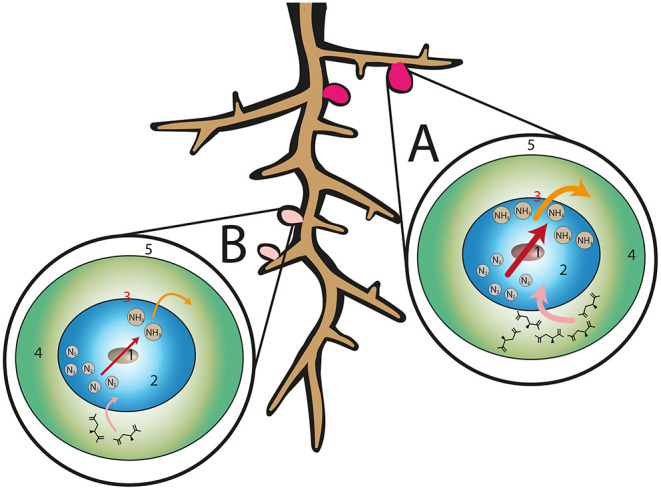Figure 2.

Host sanctioning in legume-rhizobia symbiosis. In the event of a compatible plant-rhizobia interaction, root nodules can be colonized by rhizobia that have different N-fixation efficiencies. For example, nodules may be colonized by rhizobia that are (A) high efficiency and thus favored from the perspective of the host plant, or (B) poorly matched but not incompatible. Inside root nodules (A,B) atmospheric nitrogen is converted to ammonia by symbiosome-resident rhizobia (red arrows) which is then transferred to the host plant (orange arrows). Photosynthates are provided to rhizobia residing in nodules in the form of malate (pink arrows). In the event that a nodule contributes little or no nitrogen fixation (B) the host plant may deprive the offending nodule of resources, such as photosynthates, to impede the development of that nodule. Labels: 1–bacteroid, 2–peribacteroid space, 3–peribacteroid membrane, 4–cytosol, 5–infected cell.
